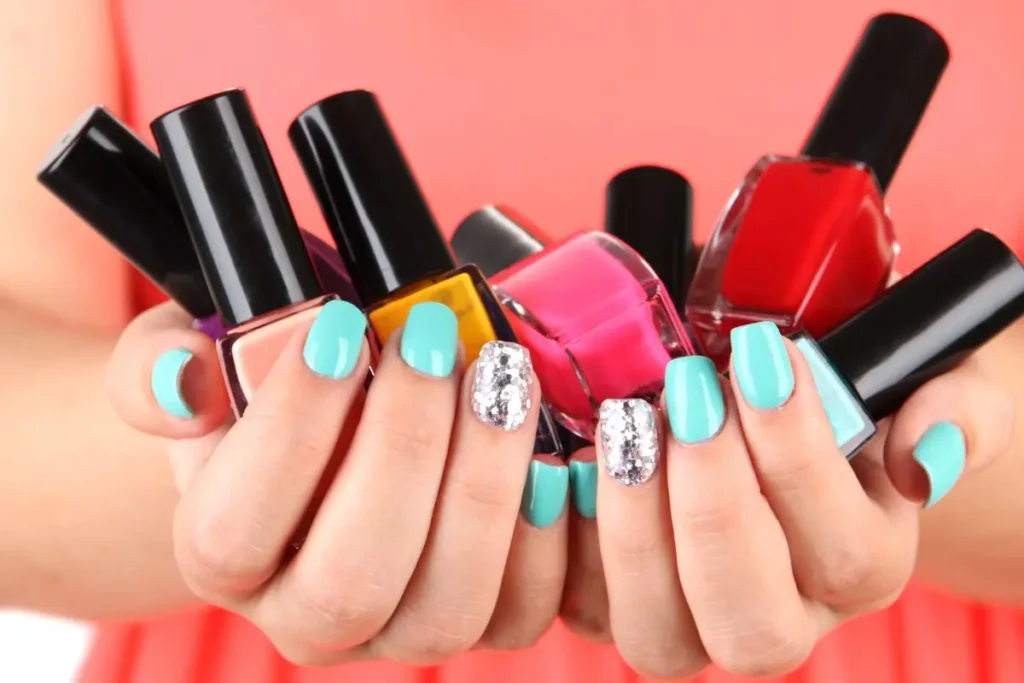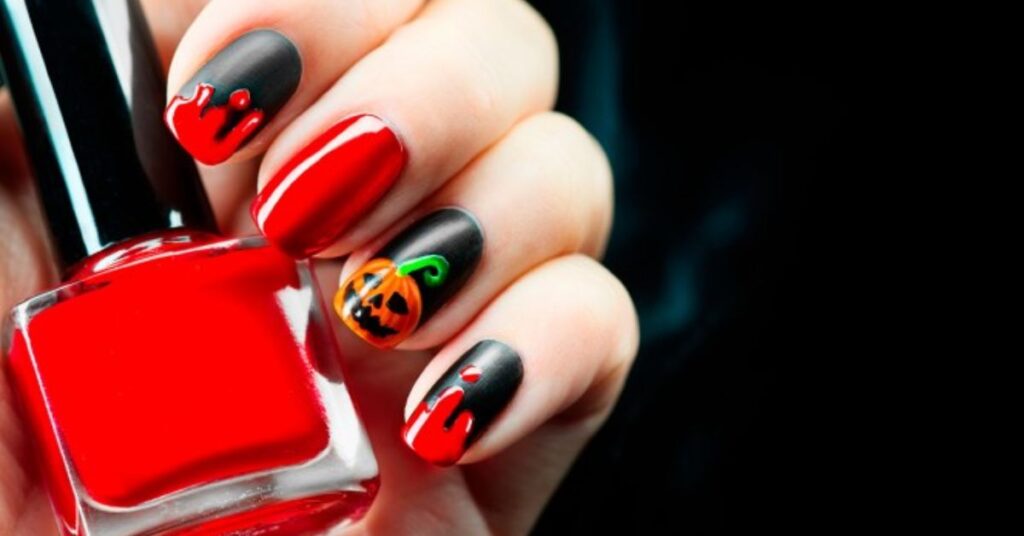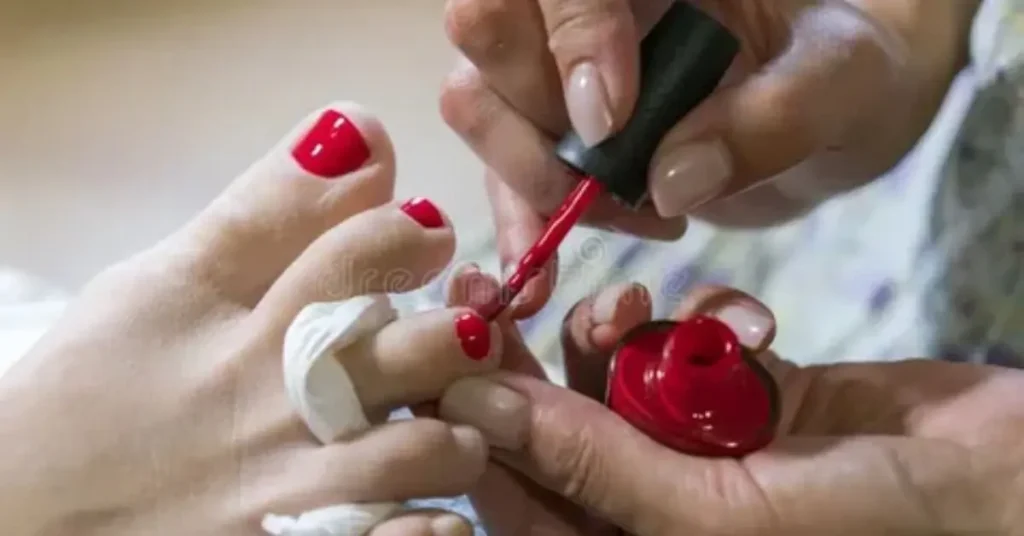Nail polish functions as an essential product in numerous individuals’ cosmetic routines. Nail polish applies multiple benefits to fingernails by delivering color and shine and delivering professional appearance. Nail polish presents an attractive facade which masks potential health threats. Nail polish contains ingredients which most customers remain unaware about. We need to conduct a comprehensive review of the health hazards at hand.
Nail polish bottles offer a powerful odor sensation right after opening. Your nose detects harmful chemicals which humans should never inhale. Multiple toxic elements found in nail products can damage human tissues. Nails and skin serve as entry points for these toxins to seep into the body. Regular nail polish application raises the probability of potential health dangers.
The cosmetic popularity of nail polish leads to multiple serious health problems which must not be ignored. The health of your body can suffer from exposure to formaldehyde as well as toluene and DBP. Nuts solvents can trigger allergic reactions and interfere with hormone production and lead to severe health problems. A high price should not be necessary to achieve lovely nails. Obtaining awareness about potential dangers creates opportunities for safer alternatives.
Types of Nail Polish

Different nail polish options exist to meet various user requirements. Every nail polish product includes its own special finish together with its unique formula and this make the manicure styles unique. Here are some common types:
- Regular Nail Polish – The classic polish that dries in air and comes in many colors.
- Gel Polish – Long-lasting and cured under UV light for a glossy look.
- Matte Polish – Gives a flat, non-shiny finish for a trendy style.
- Peel-Off Polish – Easy to remove without any remover, perfect for short-term wear.
Is Nail Polish Bad for Your Nails?
Formulas within nail polish tend to dehydrate and make nails weaker as time progresses. Using nail polish without rest periods results in nail discoloration as well as peeling.
Several nail polishes include harsh chemical components. The chemicals in these products remove natural nail oils. The nails experience brittleness and thinning as a consequence and cause fungal infection. Your nails need periods of rest to stay in good condition.
What are The Most Toxic Ingredients in Nail Polish?

The toxic components present in nail polish products pose health dangers to people who use them. The functioning of Polish hardening requires formaldehyde as an ingredient which causes skin irritation to humans. Scientific evidence shows how toluene as a toxic substance harms nervous system operations and harms breathing mechanisms. Nail polishes from different brands include the hormone-disrupting substance Dibutyl phthalate (DBP).
The Top 5 Toxic Chemicals in Nail Polish
Nail polish products contain dangerous chemicals which endanger user health. The most dangerous substances found in ingredients exist within popular brand nail products. The monitoring of these five toxic ingredients must be performed in nail polishes:
- Formaldehyde – A strong preservative linked to cancer and skin irritation.
- Toluene – Can affect the nervous system and cause headaches or dizziness.
- Formaldehyde Resin: A less potent derivative of formaldehyde, it can still trigger allergic reactions and skin irritation.
- Dibutyl Phthalate (DBP) – Known to disrupt hormones and affect fertility.
- Camphor – Can cause nausea or dizziness when inhaled in large amounts.
These toxic ingredients can be absorbed through nails or inhaled during application. Always check labels before use.
Additional Chemicals in Nail Polish
Multiple nail polish products contain damaging ingredients. These chemical substances possess multiple detrimental effects on human health. The following substances represent the most dangerous toxins which require attention:
- Triphenyl Phosphate (TPHP): Used to make polish flexible, but it may disrupt hormones.
- Xylene: A solvent that can irritate the skin, eyes, and lungs.
- Parabens: Preservatives that may affect hormones and increase cancer risk.
- Lead: A toxic metal that can harm brain development, especially in children.
- Phthalates: Linked to hormone problems and reproductive damage.
Choosing a Nail Salon
Your first step in selecting a nail salon should be to assess both cleanliness and hygiene procedures. You should verify that the salon uses licensed technicians to guarantee high-quality service. Review platforms help you understand how satisfied clients are with their visits. The final step involves checking different prices to identify a salon that offers affordable services.
Effects of Nail Polish on Nail Health

Nail polish creates weakness in nails because it blocks both oxygen and moisture which results in dry and brittle nails. The regular application of nail polish without periodic rest periods might result in yellow discoloration and staining from chemical pigments. Acetone removers remove natural oils from the nail bed which causes additional damage to the nail bed. Base coats with nourishing properties combined with hydrating treatments serve to reduce the adverse impacts of nail polish on nails.
Short-Term Effects: Dryness and Discoloration
People who frequently wear nail polish cause their nails to become dehydrated and dry. Dark nail polish application leads to temporary yellow discoloration or staining of fingernails.
Long-Term Effects: Weak and Brittle Nails
Nail structure deterioration happens when people keep their nails painted with polish for extended periods of time. Nails become fragile and thin and develop brittleness because the nail structure weakens from continuous nail polish application.
Allergic Reactions and Sensitivities
The use of nail polish leads to allergic reactions from formaldehyde and toluene in its ingredients. Redness appears on the nails together with itching and swelling as symptoms.
Can the Harmful Effects of Nail Polish Be Prevented?
People can prevent the dangerous side effects that nail polish creates. Look for “3-free” or “5-free” nail polishes which do not contain toxic chemicals. The application of nail polish should happen in well-ventilated areas to minimize fume contact. Your nails require regular periods without polish to stay healthy.
Understanding “Free” Claims in Nail Polishes
When shopping for nail polish buyers may come across either 3-Free or 10-Free labels in their product listings. Safety labels serve as essential indicators to determine the quality of nail polish compositions. Each term used in these labels represents a specific meaning as follows:
Here’s a concise breakdown of nail polish labels and their meanings:
- 3-Free: No formaldehyde, toluene, or dibutyl phthalate (DBP).
- 5-Free: Excludes the above plus formaldehyde resin and camphor.
- 7-Free: Avoids the five plus xylene and ethyl tosylamide.
- 8-Free: Removes the seven plus parabens.
- 10-Free: Eliminates the eight plus lead and acetone.
- 12-Free: Excludes the ten plus TPHP and animal-derived ingredients.
- 16-Free: Bans the 12 plus titanium dioxide, fragrance, and other toxins.
- 20-Free: Free from the 16 plus hydroquinone, carmine, and additional harmful additives.
Choosing higher “free” numbers reduces exposure to harmful chemicals.
Safety Concerns and Potential Risks

Nail polish has ingredients which present health threats through skin irritation and allergy reactions and toxic effects that last over time. Formaldehyde along with toluene within the ingredients has been associated with respiratory problems and hormone disturbance. The exposure risks grow when nail polish is used often without sufficient ventilation. The risks associated with these dangers become less severe when people select safer alternatives while also moderating their use.
Toxicity and Chemical Exposure
The chemical compounds formaldehyde and toluene exist in numerous nail polishes. The toxins present in these products can trigger skin reactions and allergic responses and respiratory problems. The long-term accumulation of exposure to these substances might result in severe health problems. Nail polish products without toxic chemicals help minimize chemical uptake and contact with the body.
Safe Nail Polish Brands and Alternatives
The market features toxin-free nail polish brands for customers to choose from. Plant-based polish alternatives with non-toxic ingredients serve as excellent choices for people seeking natural alternatives. Review the product labels to find certifications which state either “10-Free” or indicate vegan status before making any purchase to ensure safety measures.
Why Nail Health and Safety Matter
Healthy nails provide protection against dangerous germs along with physical damage to the nails. Weak nails that are damaged create conditions for pain and fungal infections to develop. The health of the body stands at risk because of toxic chemicals used in polish products. Taking proper care results in maintaining long-term strength and beauty of nails.
What actually will damage your nails?
Acetone-based nail polish removers used frequently cause nail damage because they weaken the nails. The process of over-filing or buffing creates long-term damage that leads to splitting and thinning of nails. The regular application of gel or acrylic products causes nails to become brittle and dehydrated. Nail biting as well as nail picking leads to both nail splitting and breaking.
Tips for Maintaining Healthy Nails
By applyin these tips you can keep your nail healthy
- Keep nails clean and dry: The prevention of bacterial growth requires both clean and dry nails.
- Use a base coat: A base coat should be used to shield nails from becoming stained.
- Limit gel manicures: The application of gel manicures should be limited because they cause both damage and thinning to the nails.
- Eat a balanced diet: A balanced diet containing both biotin and protein should be eaten regularly.
- Don’t bite nails: The habit of nail biting should be avoided because it creates risks of infection and nail damage.
- File gently: Nails should be filed in a single direction to prevent damage.
- Take polish breaks: Periods without nail polish help your nails rest and heal.
FAQs
What impact does nail polish have on your nails?
The long-term application of nail polish without periodic breaks results in nail discoloration and brittleness and nail weakness. The chemicals toluene formaldehyde and dibutyl phthalate present in many nail polishes become dangerous when applied in large quantities.
How is nail polish harmful for nails?
Long-term nail polish wear results in nail dryness that leads to the formation of chalky white surface patches.
What are the risk factors of nail polish?
Nails become weak when exposed to nail polish repeatedly which results in brittleness and yellow discoloration and nail peeling because of extended chemical exposure. Breathing problems from formaldehyde in nail polish and nail hardener include coughing and asthma-like symptoms and wheezing while allergic reactions and irritated eyes skin and throat occur. Formaldehyde can cause cancer. Sleepiness and irritated eyes, nose and throat are reported effects of using Isopropyl acetate (nail polish, nail polish remover).
What are the safety precautions for nail polish remover?
Keep away from breathing in the substance and prevent contact with skin and eyes. Wear gloves when handling spillages. Avoid spreading of the material. Spillages need to be contained using sand, earth or suitable inert absorbent material.
How do you keep nail polish safe?
Heat serves as a major factor in spoiling nail polish products. Nail polish should be stored in a temperature-controlled space with stable temperatures. Heat speeds up the deterioration process of nail polish compounds. The lifespan of nail polish becomes longer when stored in a stable and cool environment.
Conclusion
Nail polish cosmetics present health risks which need public understanding. Nail polish usage over time weakens nails until they become brittle with abnormal discoloration. Users who come into contact with nail products containing formaldehyde and toluene chemicals may develop respiratory problems and allergic reactions. Excessive product usage throughout time can create serious medical issues for users.
Non-toxic polishes with “”free”-labeled certifications provide the best way to reduce potential harm. Regular periods without polish help your nails stay strong. Apply nail polish in areas with good ventilation to minimize fume inhalation. Making aware decisions enables you to experience manicures both safely and responsibly.






